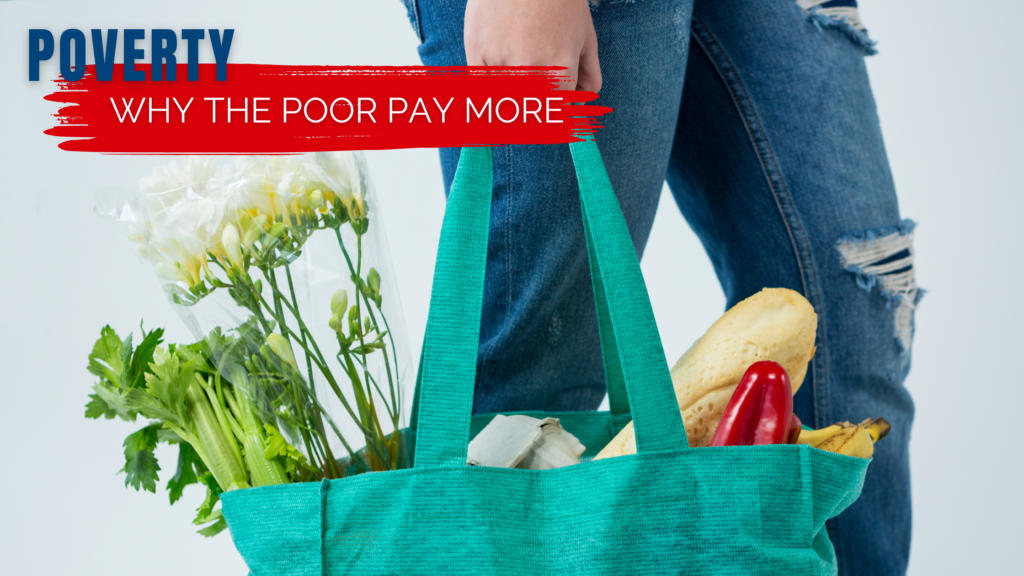
Last week, we reflected on the value of participating in a poverty simulation. It gives us the opportunity to “walk in someone else’s shoes.” This week we are still exploring the experience of living with poverty, but shifting our focus to a different phrase: “The poor pay more.”
This concept often comes as a surprise to participants in poverty simulations. While perhaps surprising, many individuals and families face this sad reality every day. The phenomenon known as the poverty penalty, highlights the additional financial burdens that low-income individuals often bear simply because they lack financial resources.
The High Cost of Poverty
A glaring example of the poverty penalty is in the realm of financial services. Financial institutions often impose higher fees and interest rates on individuals who have low incomes or poor credit histories. This means that those who can least afford it end up paying more for essential banking services like checking accounts and loans.
Transportation is another area where we see the high cost of poverty. Many low-income individuals reside in neighborhoods with limited access to public transportation or affordable modes of travel. As a result, they may be forced to rely on taxis, rideshare services, or even purchase less reliable vehicles. These transportation options often come with higher costs in terms of maintenance, fuel, and insurance. This creates an additional financial burden for those already struggling to make ends meet.
Healthcare is perhaps one of the most critical areas impacted by the poverty penalty. Without adequate health insurance coverage, individuals may delay or forego necessary medical care. This can lead to more severe health problems down the line, resulting in higher medical bills and decreased productivity. Furthermore, low-income individuals may live in areas with limited access to quality healthcare facilities. This forces them to travel long distances or rely on emergency services for their healthcare needs.
The cost of housing is yet another aspect of the poverty penalty… One that we will dive into next week.
Poverty’s Impact on Children
In our work at Henrico CASA, we see how the challenges related to living with poverty impact children’s wellbeing and their family life. Sometimes a child’s needs may or may not be met based on how their caregivers navigate these costly challenges.
As we reflect on the high price of being poor, let’s never forget our role in advocating for supports and services that alleviate the burdens faced by those living in poverty. By working together, we can strive towards a more equitable society where every child has the opportunity to thrive, regardless of the socioeconomic status they are born into.








